Overview
Music Delievered as Experience
Amazon Music Challenge
Best Design Thinking
The Team
Contributions
Time Line
12 Feb, 2025
to
24 Mar, 2025
Research
A Strategic Approach to Identifying the Roots of Retention
Although the challenge aimed to address user retention for Amazon Music, we initially lacked clarity on the root causes, contributing factors, and user needs within the target segment. To get answers, we crafted a simple two-question research approach that effectively guided our understanding.
Interviewed 50 users over two weeks across the United States, targeting two age groups (20–35 and 35–50), and focusing on users of four leading music streaming platforms: Spotify, YouTube Music, Amazon Music, and Apple Music.
We streamlined the research process by framing the problem around two key questions about user retention, which enabled us to efficiently synthesise user responses into actionable insights.
Synthesis
Two Branches of the Same Root
We identified two key themes emerging from the questions we asked, each backed by strong user quotes and opinions. These themes clearly stood out as critical areas to address. Based on our synthesis, the two corresponding questions and their insights were:
What crucial quality does competition have that Amazon lacks, causing users to return back?
What is the one thing Amazon Music could provide that would make it impossible for users to leave?
Ideation
The Fastest Problem-to-Solution Transition
This project was executed over the course of four weeks, excluding the time allocated for presentations with the Amazon Music team. We dedicated the first two weeks entirely to research, as we believed it was the foundation for building something meaningful. However, the remaining time wasn’t sufficient to design a fully polished solution. To adapt, we modified our approach, prioritising rapid ideation and accelerating the transition into design. We began by generating a wide range of ideas based on our intuition, and then filtered them to identify the most fitting solution guided by insights from our research. This modified approach allowed us to explore ideas with greater depth, and it was this depth that ultimately led us to win the challenge.
The Filter: People, Business & Technology
We explored a wide array of ideas, each targeting different strategies to improve user retention. Among them, two directly addressed the core issues uncovered during our user research, identified through the filtering framework shown below. Additionally, a business-focused angle was incorporated based on insights from our mentorship sessions with Amazon. This approach leveraged Amazon’s unique scale and strengths in the retail business to design a solution that only Amazon could successfully execute.
As a result, we chose to further develop and create implementation strategies for two key ideas: Suggestion Modes and the Rewards Program. Suggestion Modes, a highly requested feature not currently available on other platforms, allows users to control the recommendation algorithm. The Rewards Program connects music listening to cultural value, taking Spotify’s concept a step further by directly tying listening to tangible rewards. This was made possible by integrating it with Amazon Shopping, offering users partial discounts as incentives.
Solution
Introducing Suggestion Modes
Imagine three simple modes that let you tailor the music recommendation algorithm to your taste. No more interruptions from trending pop tracks when you’re deep into jazz mood today.
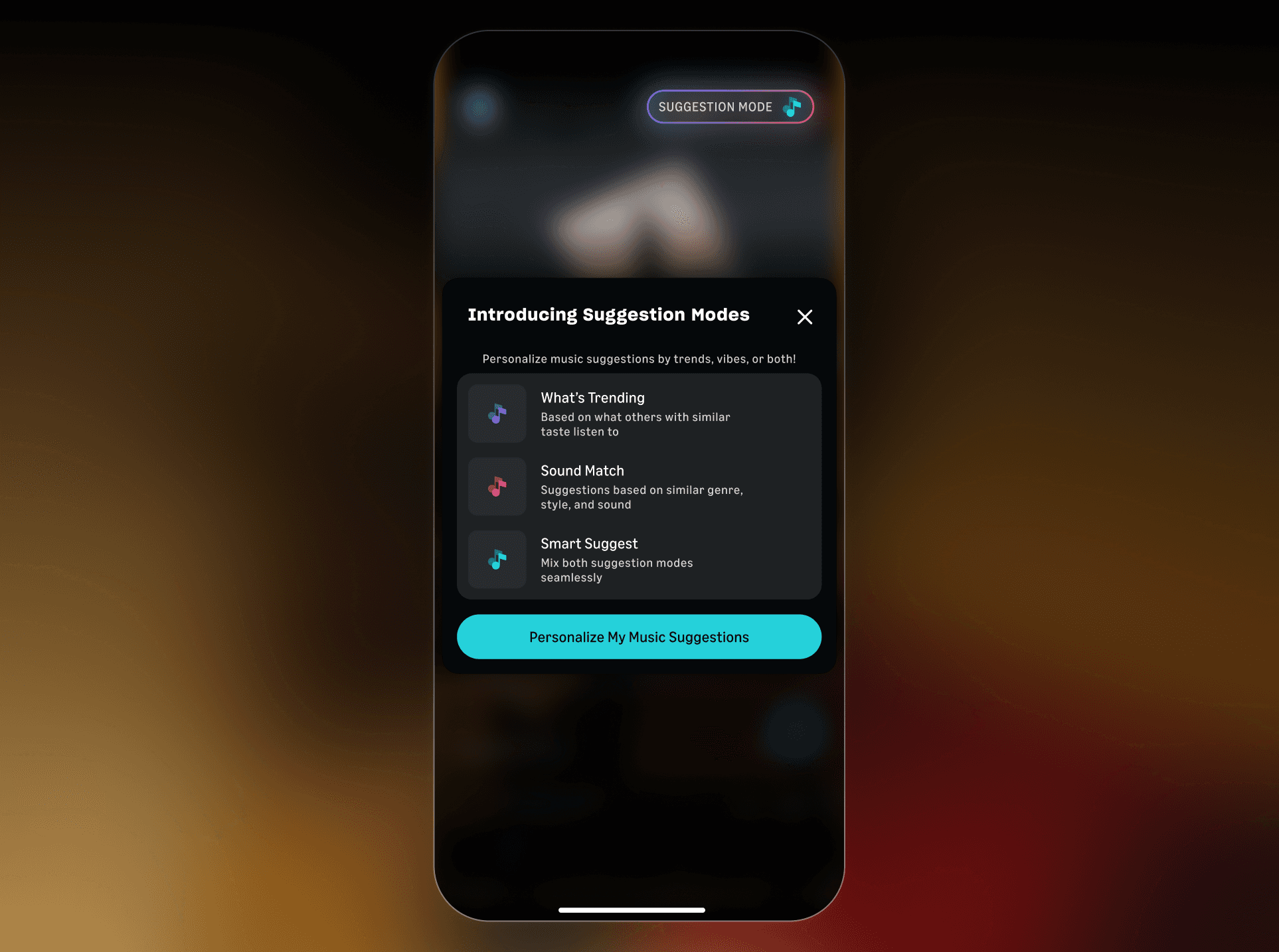
Music Algorithms: 101
We explored how music recommendation algorithms actually function and found that recommendations were typically based on two factors: similarity to previously liked music or popularity among people with similar tastes. In technical terms, this corresponds to content-based filtering (for similar music) and collaborative filtering (for trending music). Interestingly, in our interviews, users often expressed a desire to disable one of these factors depending on the context. So we thought, what if we simply gave them that control?
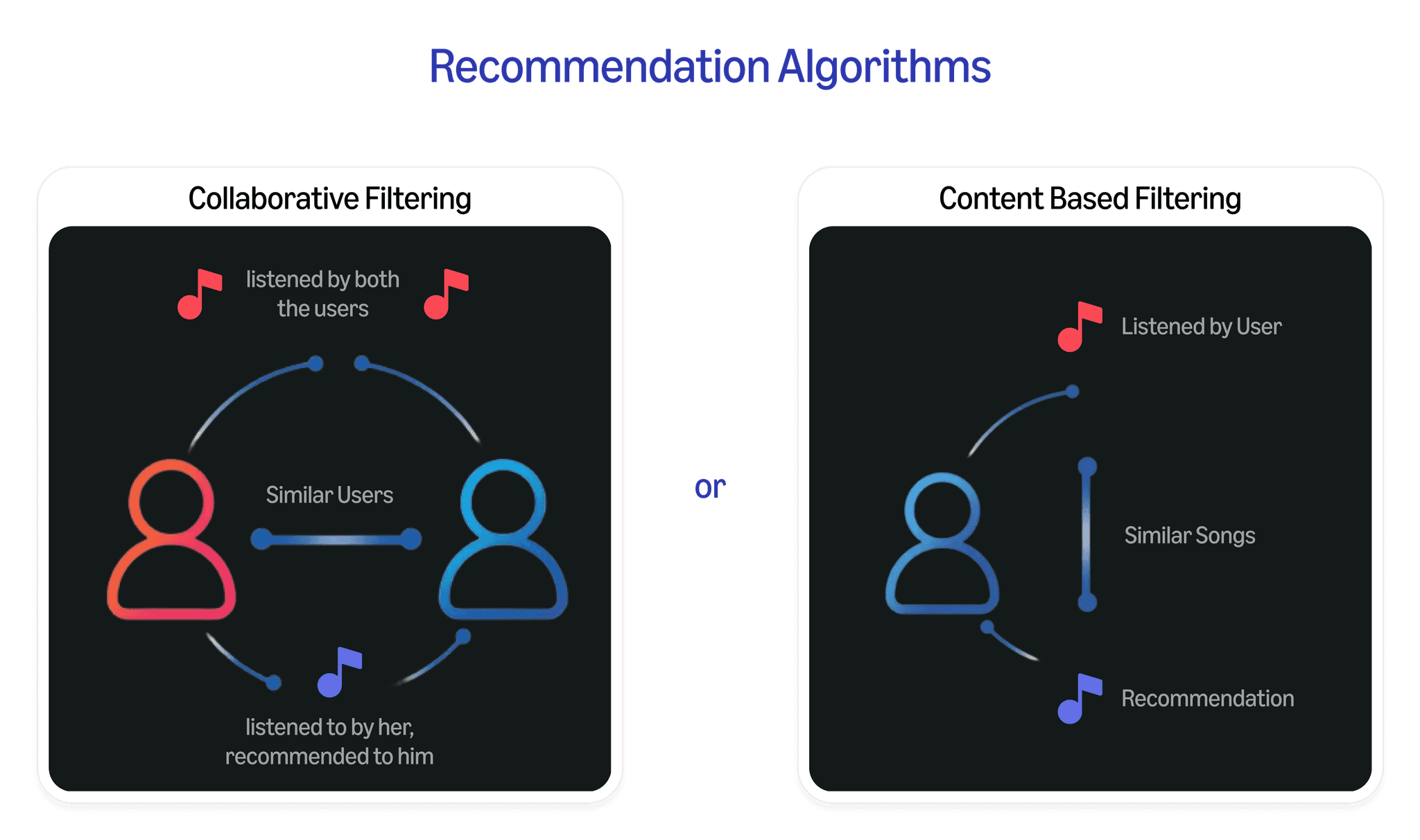
Implementation Strategy
A key challenge we uncovered using the Jobs-To-Be-Done framework was whether users would understand how these algorithmic concepts work. To address this, we focused on thoughtful design details using clear and simple terminology, effective use of colour to communicate system states, and visual cues to help users identify the source of each recommendation. These elements aimed to help users gradually learn and grasp how the recommendation system operates.
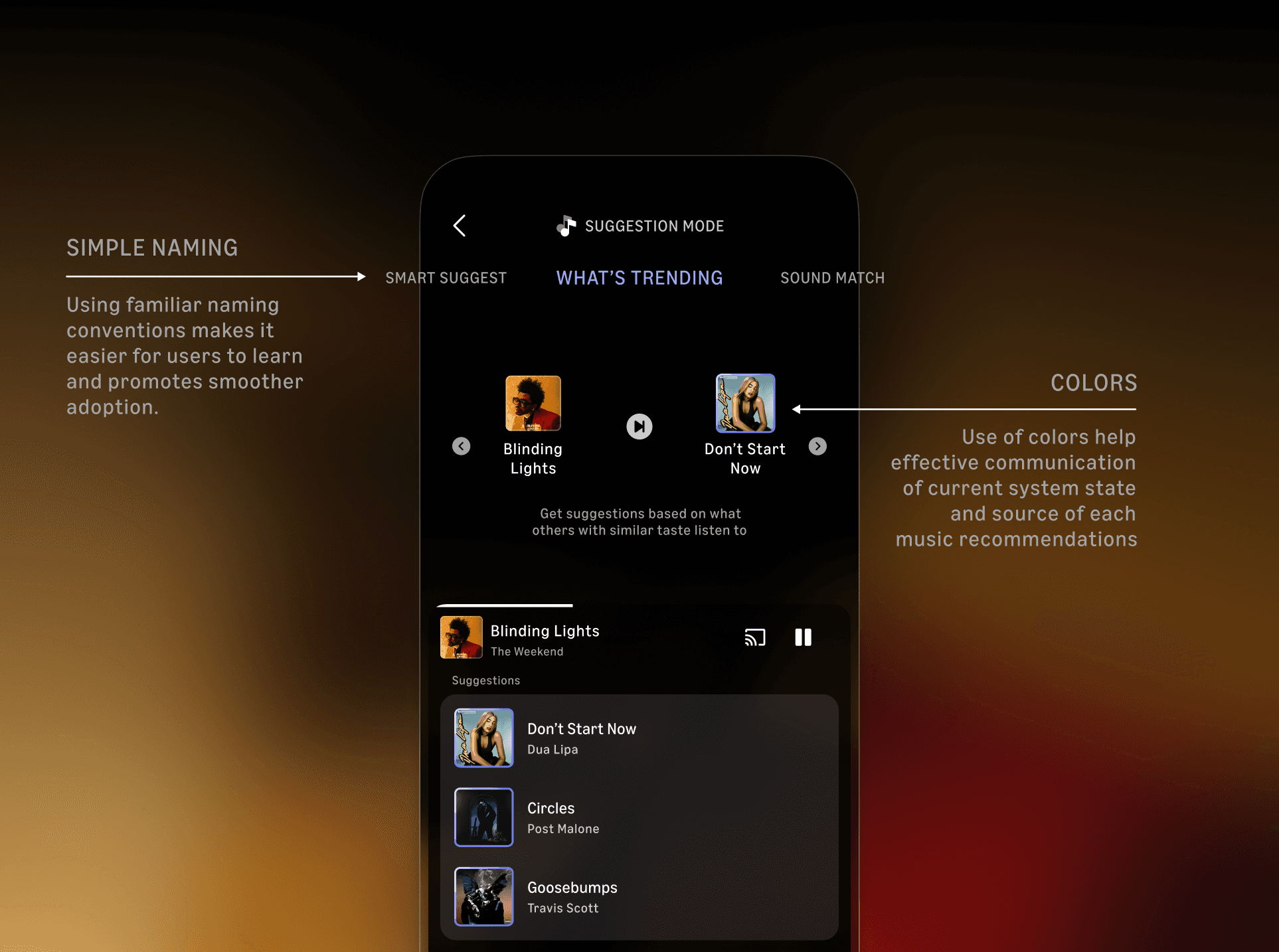
Selecting suggestion modes in Amazon Music
To encourage seamless adoption, we integrated the feature at two strategic touchpoints, ensuring users encounter it exactly when it’s most relevant. The first is a global setting accessible across the app, and the second is within the upcoming song queue, a natural place where users review recommendations and are more likely to explore different modes.
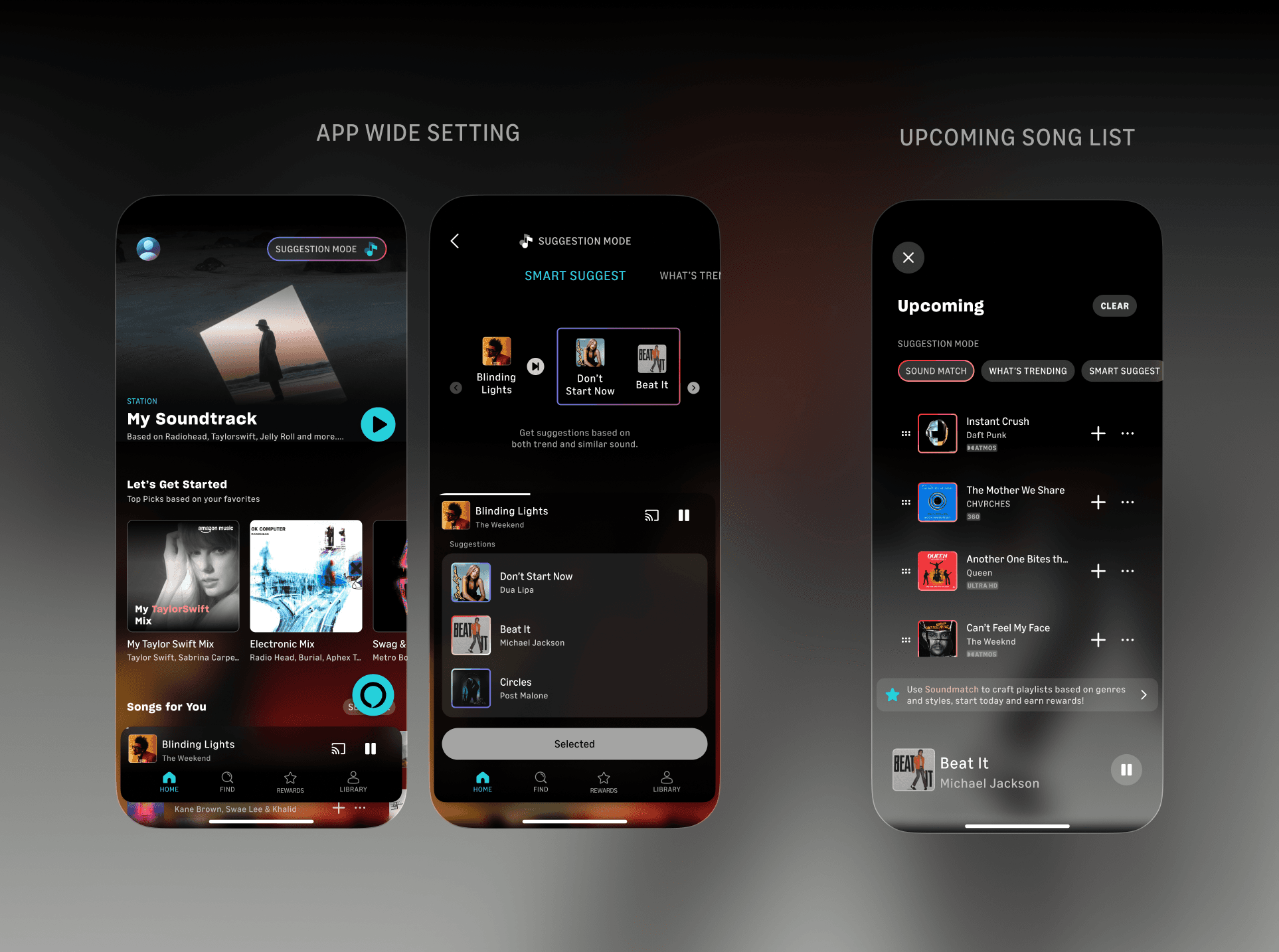
The two touchpoints for suggestion modes
The feature also offered added value by creating a connection to the rewards system. We strategically primed users to discover rewards within targeted areas of the app, helping to catalyse greater retention.
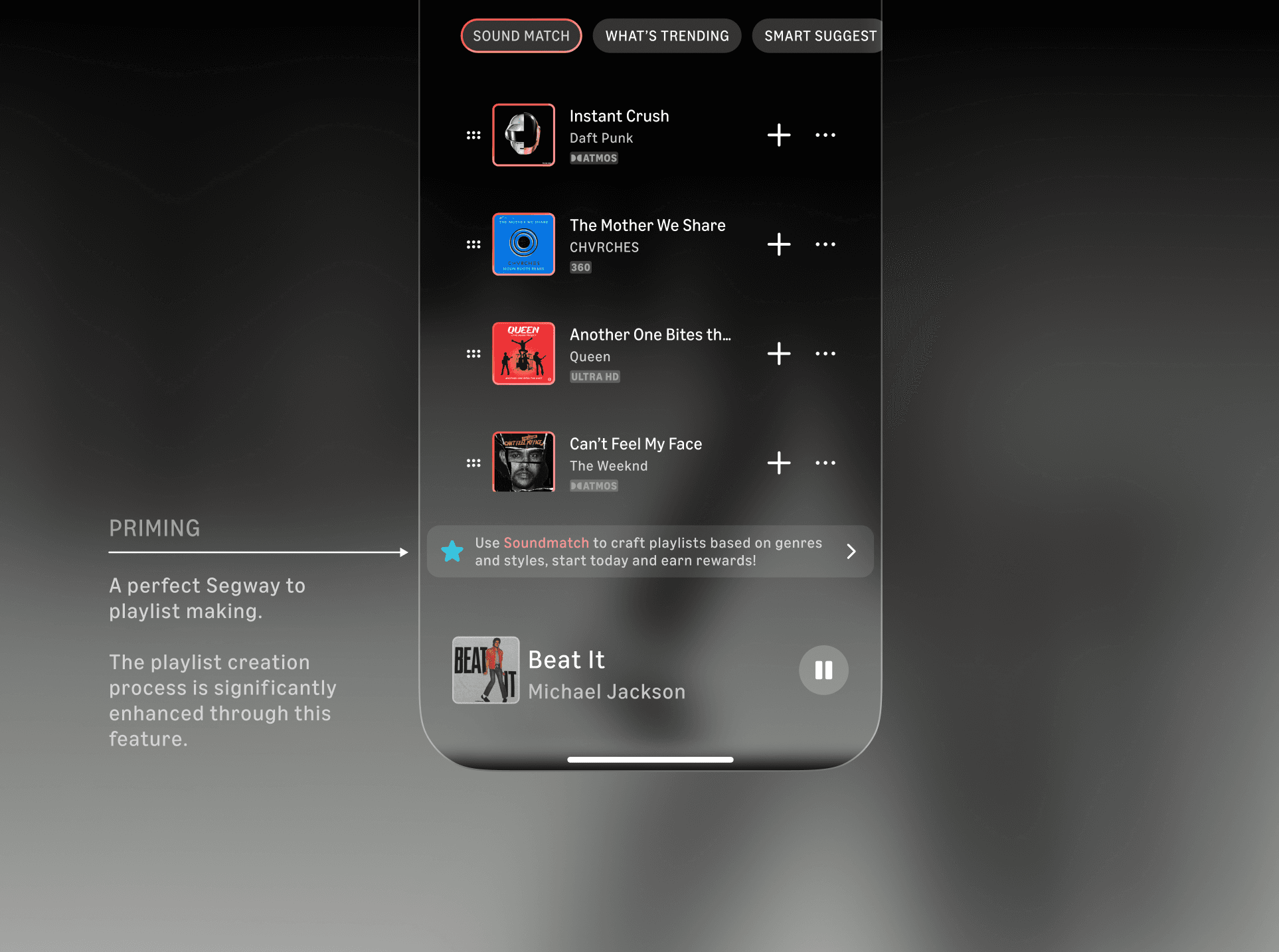
Priming users to playlist making and earning rewards
Why This Works?
High Impact Due to Listening Behavior
46% of users choose to play a single track instead of starting a playlist, making them highly dependent on the algorithm for their next song recommendation.
A Psychological Effect on Users
Gives users the sense that the algorithm is tailored specifically for them, rather than passively accepting its suggestions with no choice.
No competition offers the same
With no one else offering the same personalisation, users will find it difficult to switch to other apps. This is true since dissatisfaction with algorithmic recommendations is a common concern.
Retrospective
A Milestone Memory
The narrative goes beyond the design phase
One challenge we faced midway through, after completing the research phase, was figuring out how to justify that two vastly different ideas could both address the same problem. What made the difference was communication, clearly explaining our reasoning and simplifying the entire process. This not only clarified our approach but also highlighted the depth of our thinking, teaching me the importance of effectively communicating a solution.
Trust your instincts, but anchor them in research
The approach we adopted in this project introduced me to a new technique. As designers, we often struggle between intuition and research, but why not embrace both? Let your intuition lead, while grounding it in research. This balance provides a solid foundation for your ideas while still leaving space for innovation.
Product is a story with many characters
Collaborating with designers, researchers, and PMs revealed the many factors that shape a product. As UX designers, our choices should champion the user while also aligning with business goals and fitting seamlessly into the overall product story. Juggling all these elements made for an exciting and holistic product sprint.
It is by logic that we prove, but by intuition that we create.
Let's Get in Touch






